Bringing a New Dog Home: Everything You Need to Know
Table of contents
- Supplies
- Driving
- Create a space
- Dog-proofing
- Eating and drinking
- Health
- Microchipping
- Pet insurance
- Bonding
- Visitors
- Socializing
- Daily routine
Bringing a new pet home is a big change for you and your family, but you can’t forget that it’s also a stressful adjustment for your new dog. Whether you’re bringing home a puppy or an adult dog, you’ll want to prepare by creating a comfortable environment and routine for them.
Use our complete guide to help your new dog feel comfortable at home and slowly allow them to adjust to their surroundings.
Get the right supplies
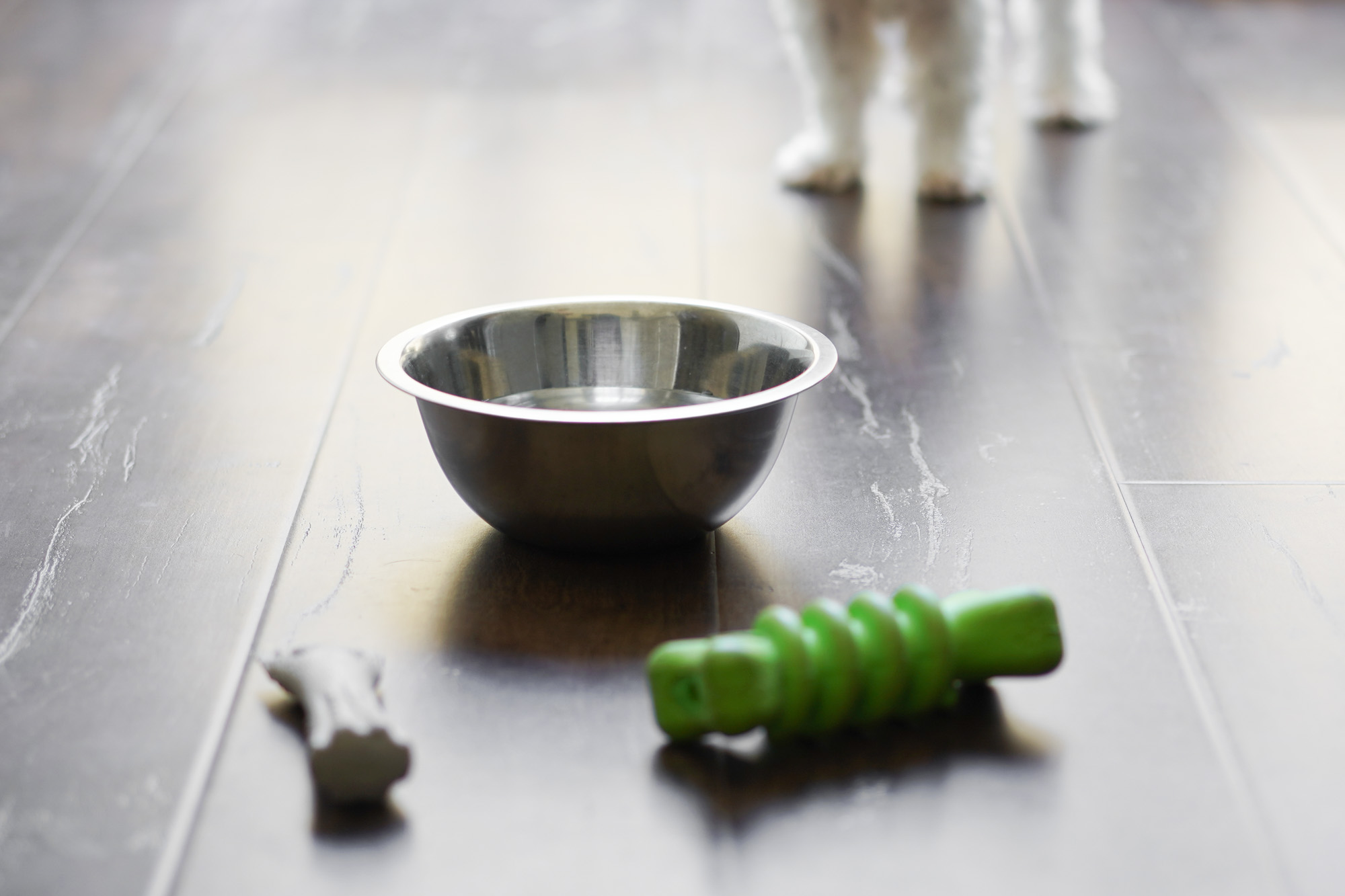
You’ll be busy on the day that you pick up your dog, so you’ll want to prepare what you can in advance. Purchase the supplies that will help them feel welcomed and comfortable in your home.
If you can, get in contact with your chosen adoption shelter or breeder to see if your pet has any toys, food or sleeping arrangements that they’re already accustomed to. Keeping something consistent with your dog’s past will help them feel more comfortable in a new setting.
We’ve outlined some must-haves for dogs at different stages:
Supplies for a new dog
You’ll likely be starting from scratch when it comes to training if you’re welcoming a puppy into your home, so there are a few necessities that will help that introduction go smoothly.
- Dog crate: A crate will help keep your puppy or dog safe when you can’t closely supervise them. It’s also a training tool, so it’s important to get a size that comfortably fits them. If you have a puppy and your crate is too large, they could use one end as a toilet, which could hold them back while potty training. If you have a dog breed that’s going to grow out of a crate fast, you can invest in a larger crate and use a divider while they’re a puppy.
- Bedding: Purchase a bed that’s large enough for your dog to stretch out on when they’re laying down. You’ll want it to be part of a comfortable space that they relax.
- Leash, collar, harness and identification tag: Using a collar versus a harness has been long debated, but in fact, both are effective supplies to have during the training process. Your collar should have a license, which is issued by the state, and an identification tag on it for safety reasons. Your harness is best for walks and training. Collars can cause a strain on the neck during walks, especially when your dog hasn’t been trained not to pull yet.
- Water and food bowls: Invest in a metal bowl as they have less risk of breaking and are easy to clean. You may also want to consider a non-slip base to avoid from the bowl moving out of place.
- Pet gate: Your dog will be curious of their new home, so if there is a room that you want to keep them away from, use a pet gate to close off that area. Choose one that’s tall enough for your dog breed since some are known to scale gates.
- Exercise pen: If you don’t have an ideal room for your dog to play in, create a space that’s larger than their crate by using an exercise pen.
- Grooming tools: Be prepared for when your dog’s nails get long and when they start shedding by having nail clippers, a brush and a hair clipper on hand.
- Chew toys: Dogs love to chew, but puppies will want to chew through everything during the teething stage. Choose toys that aren’t too small to prevent choking.
- Dog food: While your dog adjusts to their new home, it’s recommended that you feed them the same food that they’re used to from the shelter or breeder. Once they’re ready, do your research and consult with your veterinarian to find the most suitable dog food option for your dog and slowly mix it in with the food that they’re accustomed to. Note that it may take a few tries until you find one that suits their health requirements and appetite.
- Dog treats: Be prepared with dog treats to reward your dog during training.
- Dog waste bags: Have plenty of these on hand while on a walk to pick up after your dog.
Download and print our checklist before heading to a pet supply store or shopping online so you don’t forget to pick up any necessary pet supplies.
Prepare your car
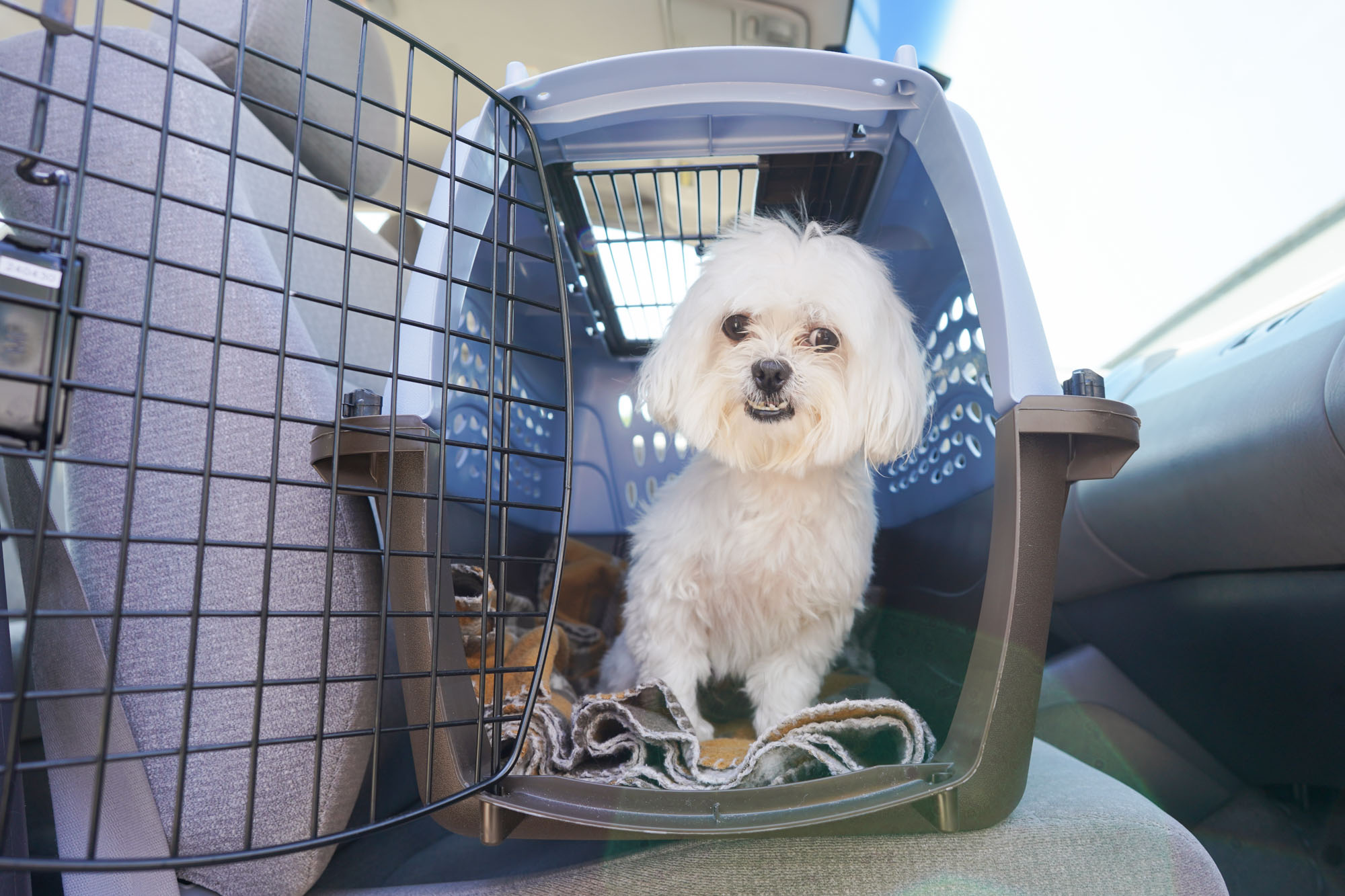
Amidst the excitement of introducing a new canine friend to your family, it’s easy to forget to ensure a safe way to transport them. Before picking them up, set up your car so you can safely bring them home.
Transport your dog in a crate if you have enough space in your car. If you don’t have enough space, you can place them in the back and tie them to the headrest using a collar and leash. Ensure enough slack to allow repositioning, but not enough to fall off the seat. Give them a toy or a chew bone to keep them occupied for the ride.
My seat protector was the best investment I ever made. It’s amazing how much general dirt and gunk they track with them all the time.
They’ll likely be anxious when transported in a car with new people, so bring wetting pads, stain and odor removers and paper towels in the case of an accident.
Set up their own space

Your home is new territory for your new pet, and their unfamiliarity can be shocking. This change can cause your pet to show abnormal behavior, so it’s important to give them a space that makes them feel comfortable.
It’s common to create this space in a crate since it helps with training and gives them a protected place to retreat to. Try to include as many familiar comforts as you can. Dogs respond strongly to smell, so include an old piece of clothing or a favorite dog toy from their former domain.
Dog-proof your home
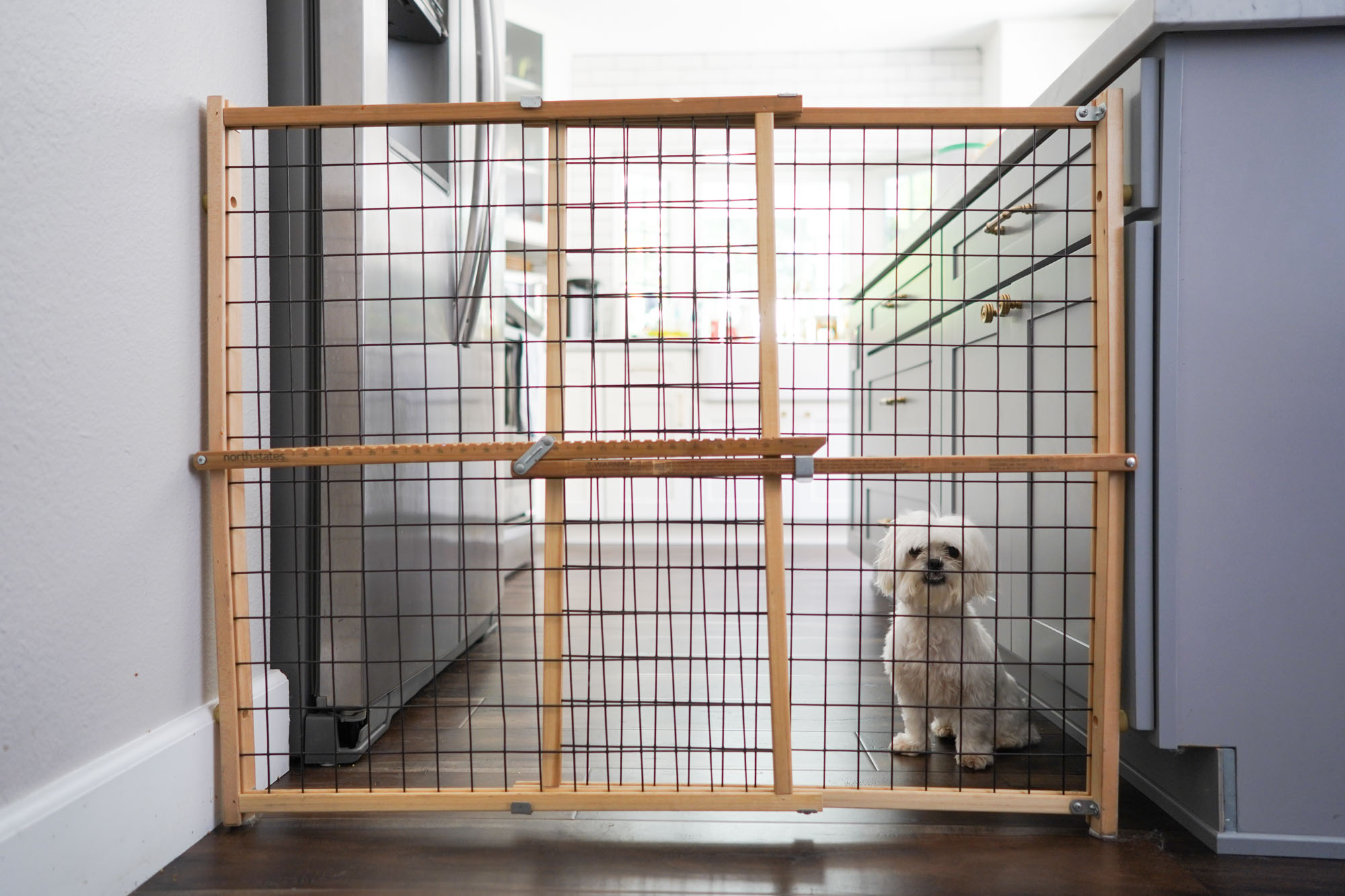
Before bringing your dog home, make sure that you create a safe environment for them. They’ll be curious of the new smells, sounds and nooks and crannies of your new place, so don’t underestimate their curiosity.
If your dog encounters a frightening event in your home, it will be difficult for them to feel comfortable in that space again, so you’ll want to avoid the possibility of an accident prior to their arrival.
Use our outline for dog-proofing every room in your home, and then download our checklist at the bottom to make sure that you don’t forget anything in the process.
Bathroom
- Close the toilet: Like you see portrayed in the movies, dogs love drinking out of the toilet bowl. Unfortunately toilet bowls contain dangerous chemicals that could leave your pet sick.
- Use a medicine cabinet: Move your medicine, make up and other small toiletries to a cabinet to avoid from your dog getting into them.
- Install a tall rack in your shower: If you leave your bottles of shampoo and conditioner on the ground of your shower, your pet will have easy access to it. Put all of your in-shower toiletries up high to avoid from them being played with.
- Be aware of hot hair tools: If you use a curling iron, hair dryer, hair straightening brush, or flat iron, turn them off after using them, keep the cords on the counter while cooling and stow them away before you leave the bathroom.
Bedroom
- Keep the door closed: This might seem obvious, but it can take time to become adjusted to closing your bedroom door if you didn’t have a dog before. Your bedroom is full of places for a dog to get into, so keeping the room off limits is the easiest way to avoid an accident.
- Keep garbage empty: If your dog does find a way to sneak into your bedroom, they’ll quickly find your small garbage can. Empty it often to avoid a mess.
- Hide small items: From makeup and jewelry, to shoes and decor, keep your small items out of reach from curious paws.
Kitchen
- Secure drawers and cabinets: Avoid cutlery or other objects from being accessible by putting locks on all of your reachable drawers.
- Turn pot handles inward: When you’re cooking, turn your hot cookware handles towards the backsplash to avoid from any pots from falling on the ground if your dog jumps up.
- Keep anything toxic out of reach: It might feel like second nature to keep all of your cleaning supplies under the sink, but you’ll want to make sure they aren’t accessible to a little explorer. Either lock your cabinet, or move them to a higher cabinet to get them out of reach.
- Secure your garbage: If your garbage can is easy to knock over or get into, secure it in a cabinet or make sure it’s sturdy enough to avoid from your little one toppling it over.
- Don’t use tablecloths: As you can imagine, tablecloths can easily mess up a dinner with a small tug. Avoid using tablecloths around dogs.
Living Room
- Block off stairs and walkways: Restrict your dog’s access to the stairs and off-limit rooms with a quality pet gate that has an effective locking mechanism.
- Tie up window cords: If you have cords dangling from your blinds or curtains, make sure they are far out of reach to your pet.
- Remove small items: Any small items on your coffee table, fireplace mantel or side tables such as decor, candles, plants and picture frames should be removed in the training phase.
- Block the fireplace: If you have an open fireplace, surround the area with a pet gate to avoid from your pet from getting near it, whether lit or not.
- Block exits: If your living room is near the front door, make sure that the doors shut properly and can’t be easily nudged open with a paw or nose.
- Put away children’s toys: If you don’t have a sealed container for toys already, it’s time to invest in one. Your dog will not know the difference between their toys and your children’s toys, so you’ll want to keep them off the ground.
Garage
- Check garage door sensor: Confirm that your garage door discontinues from closing if someone runs under it before it touches the ground. That way, there is no chance for your dog to get caught if they run under it at the last second.
- Stow away hazardous substances: If you have antifreeze, lighter fluid, gasoline, oil or other harmful substances in your garage, make sure to put them out of sight and lock them up. Some of these substances can taste and smell sweet, so you don’t want your pet to get the wrong idea.
Backyard
- Enforce the perimeter: Make sure that your yard is closed off with a fence that is high enough that your dog can’t jump over it.
- Remove items from fence perimeter: If you have a garbage can or supplies leaning against your fence, your dog can use it as a stepping stool to jump over the fence.
- Install a pool cover: If you have a pool, invest in a pool cover that locks so your dog can’t nudge and get under it.
- Don’t use pesticides: If you can avoid it, don’t use pesticides in your yard since it can be poisonous for dogs.
Make sure your backyard is dog proof. If you’re getting a small dog, they can easily get out through little cracks that you wouldn’t even think of.
After you dog proof your home, you’ll feel so much better about bringing your new pet home. Download and print our checklist to make sure you didn’t miss any essential safety-proofing steps.
Help them eat and drink
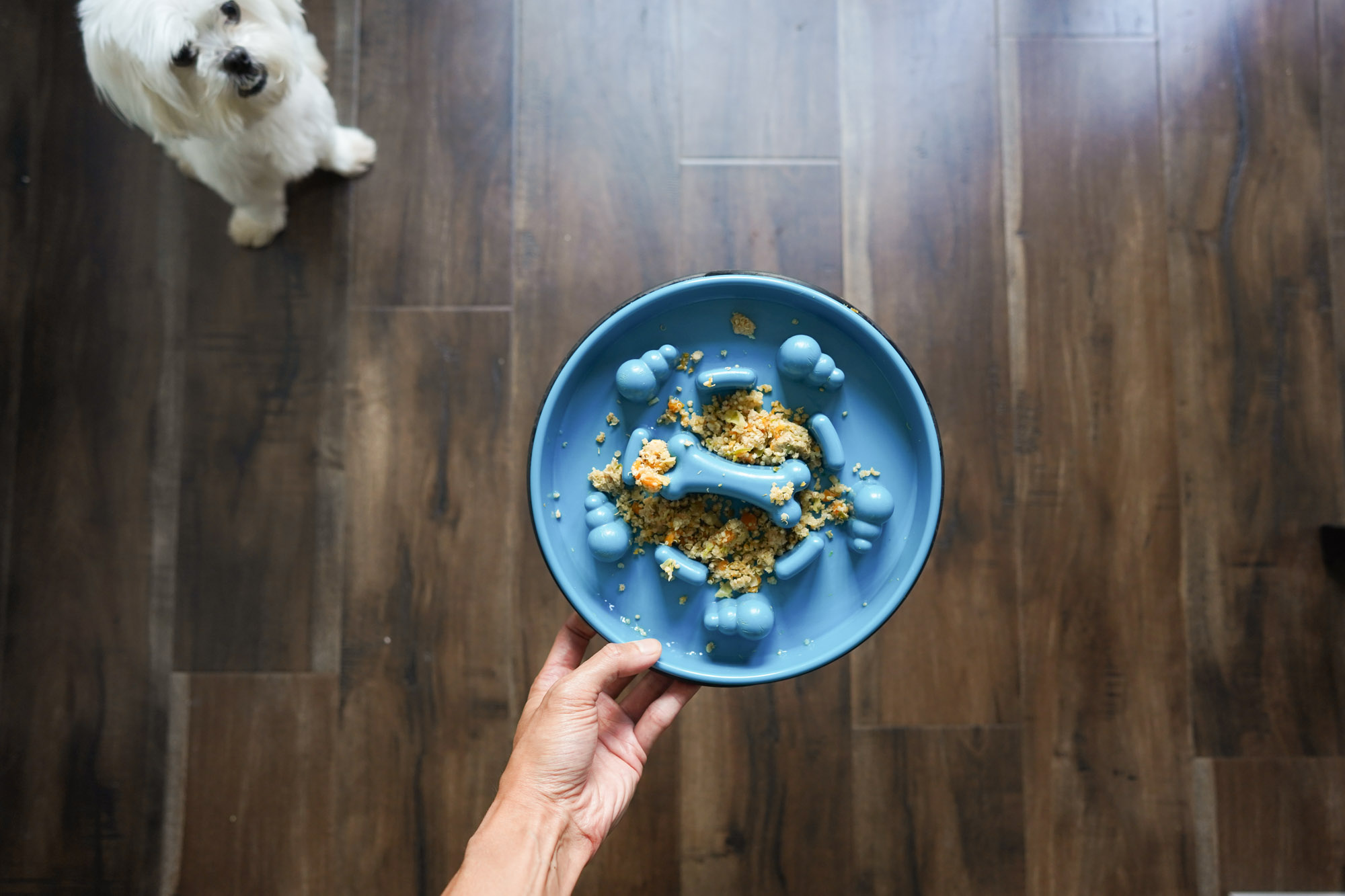
It’s common for pets to have stomach issues when your dog is changing diets or in a stressful situation. If possible, find out how they were eating prior to bringing them home and slowly transition them from one food to another.
It’s also easy for them to lose their appetite in new surroundings, so it could take time for them to eat a normal-sized meal. If you’re having trouble getting your dog to eat, try mixing their food with high-value food such as cooked shredded chicken or chicken stock. Over the course of several days, eventually wean them off the high-value food.
If they are still having trouble eating after a few days, consult with your veterinarian on alternative steps you can take.
Ensure your dog’s health
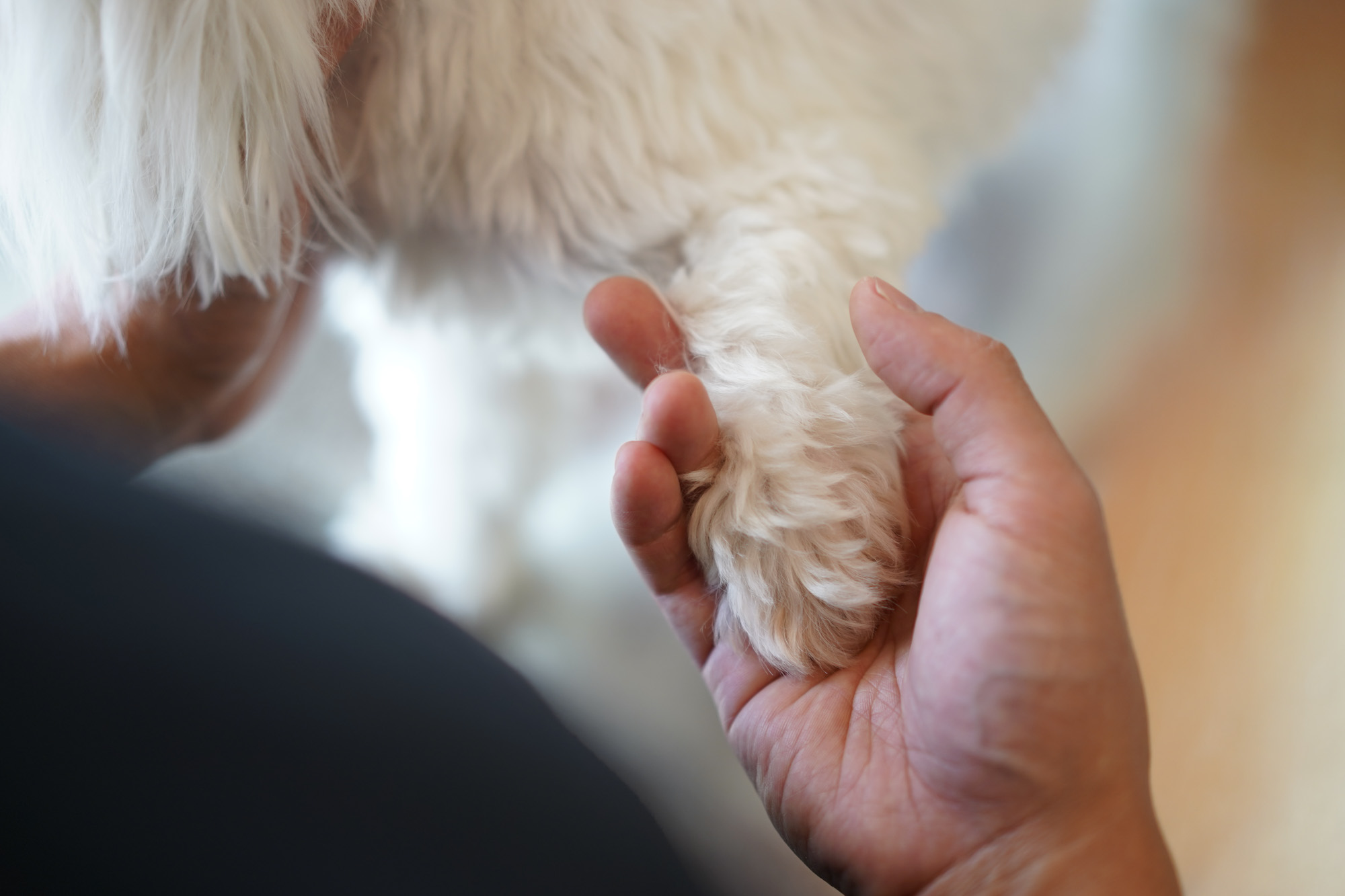
Whether you’re adopting or picking up your dog from a breeder, make it a priority to confirm that they get their vaccinations if they don’t have them already. It’s common for diseases to spread from one dog to another in a shelter, so you’ll want to bring them to a veterinarian within one week of their adoption.
If you have a puppy, there are core vaccines and non-core vaccines that your veterinarian will walk you through during your appointment. The common core vaccines are: rabies, distemper, parvovirus and adenovirus. There are a number of non-core vaccines that your veterinarian will have you consider based on your dog’s circumstances.
If you have other pets at home, make sure that they’re healthy, are up-to-date on their vaccinations and are spayed or neutered.
Microchip your dog

A pet microchip is a small electronic chip inserted under your dog’s skin that can be used to identify them if they go missing. It’s injected with a hypodermic needle, which is said to be as painful as a regular injection.
If your dog is found, an animal shelter or veterinary clinic can scan your pet’s chip for their registration number, which is connected to your name and number in the registry. Microchipping your dog will give you the peace of mind if your pet is to ever go missing, and if your dog is in a new environment, it’s common for there to be escape attempts.
Consider pet insurance

Although purchasing pet insurance is not a requirement as a pet owner, it will allow you to make healthcare decisions for your pet without worrying or not if you can afford the treatment. Although you might be expecting to cover routine veterinary appointments, there is always potential for unexpected injuries and diseases.
Dog health insurance is your best friend if you own an accident prone dog, a large unhealthy breed, or simply don’t have thousands of dollars in an emergency fund for unexpected vet bills.
Worried about the associated costs? The North American Pet Health Insurance Association’s (NAPHIA) 2018 State of the Industry Report indicates dog owners paid an average annual premium of $536 in 2017 for accident-and-illness plans. That equates to about $45 for a dog’s monthly premium.
For many dog owners, paying a monthly pet insurance premium is worth the chance that their pet is hurt or sick.
Spend time with them

One of the most important ways to make your dog feel at home is by spending time with them. As you can imagine, neglect can lead to your dog acting out while seeking attention. The more time you spend prioritizing them, the more comfortable they’ll become.
If you incorporate your dog into your routine, spending time with them won’t feel like you’re carving time out of something else — it will come naturally. These are our favorite ways to incorporate our dogs into our routine.
- Bring them on errands: While you don’t want to keep your dog in the car when you’re running errands, take them along if you’re in dog-friendly stores and restaurants.
- Make them your workout buddy: Swap your time at the gym for something you can enjoy outside such as hiking, running or going for a walk.
- Socialize with your dog: Don’t skip out on time with your friends and family to stay in with your dog. Engage in activities in which you can bring your dog along with you.
- Go to a pet event: There are thousands of pet events that happen around the U.S. annually. Look for meet ups or events in your area that will allow you to socialize your dog with others in the area.
- Groom them yourself: Routinely complete grooming duties such as bathing, cleaning teeth, cleaning ears, trimming nails and brushing them.
Avoid inviting too many visitors over

You’ll likely want to show off your new dog as soon as you get home, but remember how overwhelming the experience can be for them. Wait a few days before inviting too many family and friends over so they have a chance to get accustomed to you and your immediate family.
Every dog has their own personality where some get excited by commotion and others get nervous. Take note of your dog’s behavior within the first few days around your family to determine when it’s a good time to introduce new people to them.
If you wait too long, your pet might become territorial, therefore, give them a few days to get adjusted and slowly start introducing more people.
Socialize and train your dog

Although you don’t want to overwhelm your dog on day one, it’s important that you socialize them with other dogs and people early on. Dogs have a reputation to be social, but their past could affect how they interact with others.
Be ready to get out exercising and do a lot of socialization. Looking up the stages of puppy development can be very helpful for insight on critical development periods over the first few years.
While every dog has their own personality when it comes to connecting with other dogs, it’s important that they are at least accustomed to seeing other dogs for scenarios where they encounter other dogs on a walk or an errand. The sweet spot for socializing a new puppy is between 3 to 12 weeks old.
Start training your dog as soon as you get home and make it part of their routine. If you have a puppy, they’ll have a short attention span, so you should make trainings brief. That said, they’ll be able to absorb obedience commands and potty training from an early age if you routinely commit around 15 minutes to training per day.
On the other hand, if you have an adult dog, it may take time to change their current habits and instill new commands. Although they might not absorb commands as quickly as a puppy, don’t give up. Build on their training with reward-based training methods.
Establish a daily routine
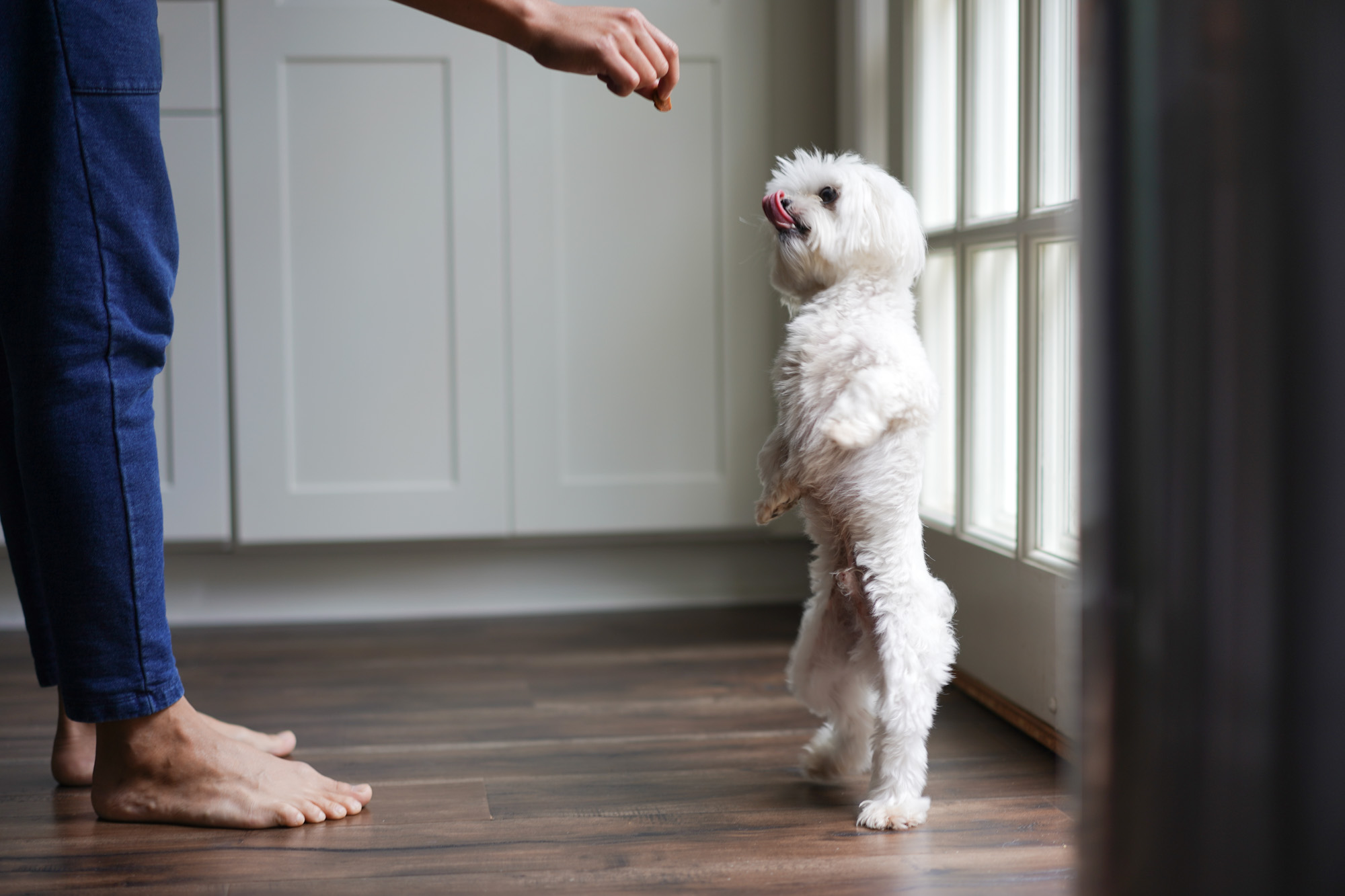
Dogs thrive on a routine, so set regular times that you do the following:
- Feeding: Consult with your veterinarian for the recommended type and amount of food you should feed your dog. Dog owners typically feed their dogs two smaller meals per day versus one large meal. Keep the dog bowl and location and timing consistent for every meal if possible.
- Sleeping: From the start, put your crate in the room that you want your dog to sleep in the long term. Make sure that the space is warm and cozy, and never have your dog sleep in an area that you wouldn’t such as the garage or in an unfinished basement. Try your best to remain consistent on the times that you put your dog in the crate and take them out of the crate every day.
- Daily walk: Keep your first walks short and close to home to help you determine your dog’s behavior when in a new environment and around different distractions.
- Letting them outside: Give your dog access to outside as much as you can, especially in the potty-training phase. Make it a routine that when they’re let out of their crate, they can immediately relieve themselves outside.
- Training: It’s easy to slack on training your dog, but consistency is key. Set up 10 to 15 minutes every day to train them.
- Alone time: You’ll have to get your dog accustomed to being solitary at times. You can do this by not giving them attention or comfort if they whine or bark while they are briefly alone. Only reward them when they are showing good behavior.
Most importantly, be patient. Some adopted dogs will have come from a loving home, while others might have been waiting at the shelter for years. Either way, it will take them time to get comfortable and familiar with their new routine.
Sources: American Kennel Club | American Veterinary Medical Association | VCA | Dogs Naturally

